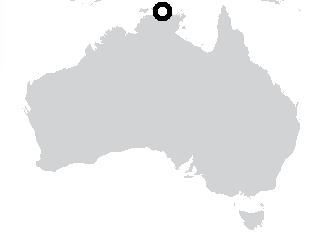
| www.CuriousTaxonomy.net |
|
The Flood in World Myth and Folklore
Australia |
| © 2021 Mark Isaak |

People dividing fish always gave the man Crow the poor quality ones. Crow cut down a big paperbark tree, which fell across a creek. Crow sat on the tree crying out, "Waag. . . Waag!" As he did, the creek grew wider and wider, dividing the island into two islands. Crow turned into a bird and flew over the people. The splash from the tree caused the water to rise, and the people, who were all on the bank of the creek, all drowned. On hearing what happened, Blanket Lizard swam towards South Goulburn Island in search of his wife, but halfway across he drowned and turned into a reef.
Berndt and Berndt, 1994, 40.

In the Dreamtime, Waruwi and Waiara (North and South Goulburn Islands) were separated by just a small creek. A man named Mandulmandul with his drum net caught many fish in that creek every morning and evening. After taking what he wanted for himself, he gave the rest to the Bird people. To Djudjud, Seahawk Man, and to Marwadi, Eagle Man, he gave good fish, but Guragag, Crow Man, was given only umbulnga, an inedible puff-ball fish. Day after day Old Crow saw all the good fish go to others. Finally he decided to do something. He got his stone axe and began to cut down the sacred djang paperbark tree.
The other Bird Men called out, "Don't you know that tree is djang? If you cut it down a great flood will come." Crow paid no attention to them. He continued cutting, and the tree fell. Water rushed in from each side, filling the creek and flooding the country. "We will die!" cried the Bird Men. As the water deepened, they really became birds, calling out their names as they flew off: "My name is djudjud, seahawk"; "My name is marwadi, eagle," and so forth. Crow called his own name and added that he would continue to eat any kind of food at all.
That is how the strait between the two islands was formed. A rough spot in the middle is where the drum net and the djang tree used to be. Mandulmandul turned himself into a rock which is visible at low tide.
Ronald M. Berndt and Catherine H. Berndt, The World of the First Australians (Chicago: University of Chicago Press, 1964), 338-339.
